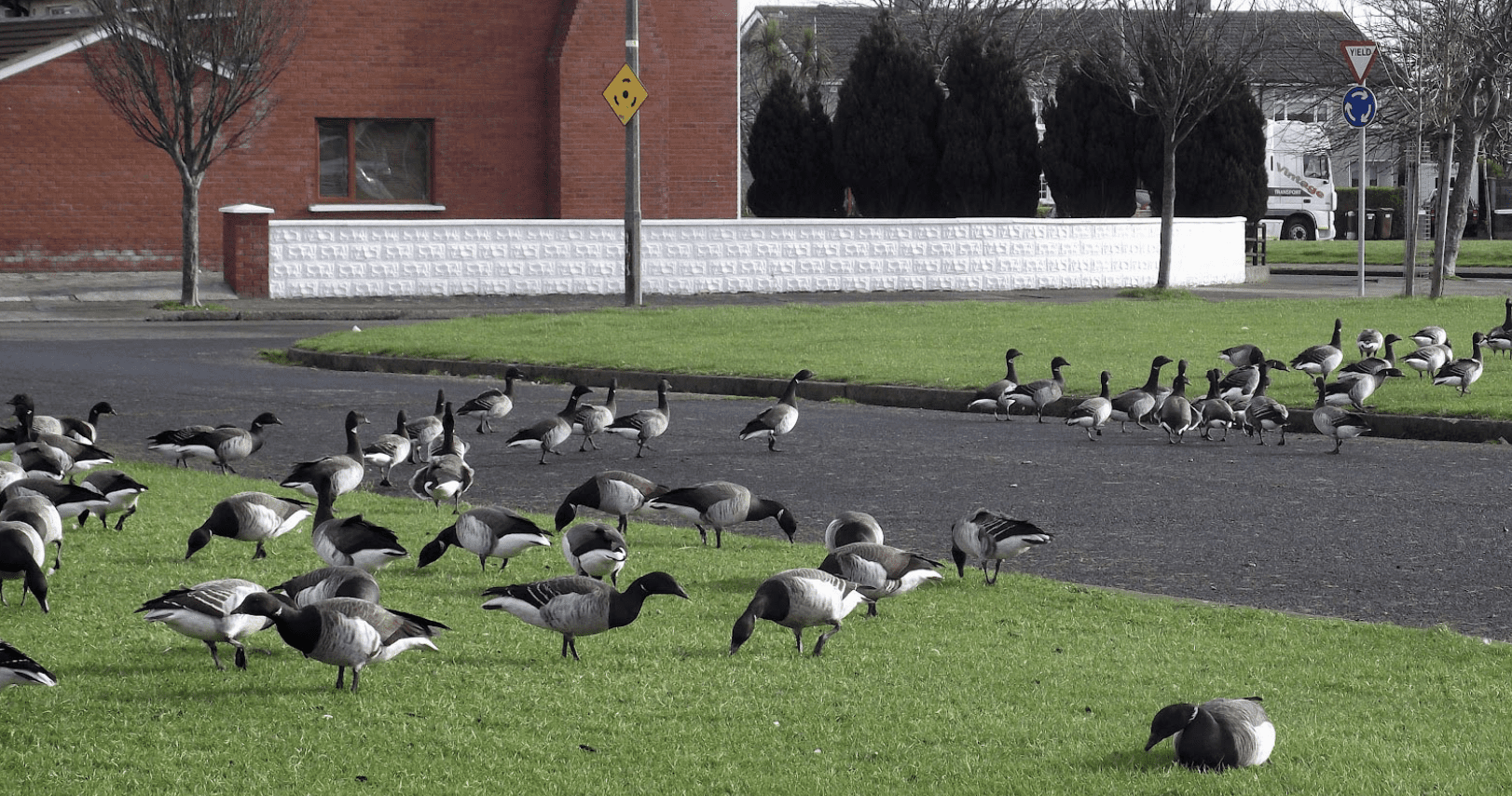THEY say the swallow is the first sign of summer – and every year Dúlra’s mood lifts a notch or two when he finally spots one. The graceful and beautiful visitor is the very definition of happiness as it flits over farms and chitters on phone lines.
For every ying there is a yang, of course, and this week over the skies of Belfast Dúlra saw a bird whose arrival signals the end of summer and the beginning of tougher times.
But it wasn’t an ominous sighting – like the swallow, this bird also manages to carry hope with it. And no wonder, because to arrive on this fine island it had to fly further than all the rest.
The flock of Brent geese were in classic V-formation as they flew over Belfast on Monday. They are clearly powerful birds and they seemed to know where they were going – probably to Strangford Lough. And when they get there, they’ll certainly deserve a break.
Because they will have flown not just the 3,000 miles from Canada non-stop over the bleak Atlantic Ocean – but you can add another 4,000 miles on top of that from their breeding grounds in Canada’s remote and freezing western high Arctic.
It’s a miracle of nature – and one our ancestors couldn’t figure it out at all. This was a bird that was thought to be magical, no-one had ever seen or even heard about it laying an egg, it just appeared every autumn out of, literally, thin air, and in parts of Ireland it was considered to be closer to a fish than a bird. In Kerry you could eat it on a Friday just like fish!
Most of the world’s 40,000 light-bellied Brent geese winter in Ireland, because despite our complaints, we ‘enjoy’ mild winters here. And while three-quarters of those visitors go to Strangford Lough, this bird is increasingly mixing it with people. As this picture shows, they don’t seem to mind housing estates, parks, golf courses and football fields – and will gang up and ‘hiss’ away any intruders, either human or canine.
It’s amazing that Ireland is so central to one of the world’s most phenomenal migrations yet few people are aware of it. In reality, we should be holding an annual goose festival every September to welcome them back!
That V-formation flight over the Belfast skyline was stunning. There are two theories of why they fly like this. One is that all but the lead bird are able to gain a 15 per cent lift from the way the air is moved by the bird in front of them. And the other is that they do it to maintain visual contact and avoid collusions – and to teach youngsters migrations routes. The geese have to abandon the Arctic tundra before the youngsters are fully grown, so the parents need to guide them carefully.
Dúlra thinks it might be all of the above!
Just like planes, the birds gradually decrease altitude as they reach Ireland. A pilot over Belfast once saw migrating whooper swans at 8,850 metres – that’s about six miles up in the air. The Canadian swans follow a rather similar path and altitude.
These geese – cadhan in Irish – not only like our climate, but also our food. They devour eelgrass – which is as common in shallow water as grass is in our parks. But when the weather is too rough around the coast, they’ll settle for just plain grass, which is when we can see them grazing even in Belfast estates.
So keep an eye out for the plump black and white geese this winter. We should lay out the red carpet – or in this case the green carpet – for our Canadian visitors.
• If you’ve seen or photographed anything interesting or have any questions about nature, you can text Dúlra on 07801 414804.







